When working as a project manager in a fast-paced environment, it’s not unheard of to plow full speed ahead into a project that drops on your lap without fully understanding its objectives. That’s why you need to start writing down complete and thorough project objectives before the project kick-off.
Not sure how? You’re not alone. Even some of the most seasoned project managers walk before they crawl. It’s never too late to go back to the basics and make sure you have a solid foundation for every project.
In this guide, you’ll learn how to write effective project objectives that align with your project goals and company vision and discover how monday work management can help with setting project objectives.
But first, let’s start with a quick definition of project objectives, goals, and deliverables.
What are project objectives?
A project objective is the what, when, and why of every project — what is the project (action items), why are you doing it (desired result), and when does it need to happen (deadline).
So, what’s the difference between a project management objective and a goal?
That’s a frequently asked question and source of confusion.
Let’s settle it once and for all.
Project objectives vs. project goals
While different, project objectives and goals are essential to project planning and executing. Think about it like this:
- Goals are the general long-term outcome you want to achieve (seldom by one project alone).
- Objectives are the short to mid-term specific, measurable actions you take to help you achieve a goal.
For example:
- Goal — Increase annual recurring revenue (ARR).
- Objective — Collect 5K new leads every month.
- Goal — Improve your product’s user experience.
- Objective — Reduce the set-up process from 6 to 3 clicks.
Project objectives vs. project deliverables
Let’s drill down further.
- Objectives define the expected benefits, outcomes, and performance improvements from the project.
- Deliverables are the specific, tangible things you produce to achieve the objectives.
For example:
- Objective — Collect 5K new leads every month.
- Deliverable — Create a detailed sales plan with target customers and revenue per sales rep.
- Objective — Reduce the set-up process from 6 to 3 clicks.
- Deliverable — Complete usability testing session with at least 20 participants.
Read: Guide to setting goals at work
Types of project objectives
There are endless objectives that a project can have, all depending on your company department and industry,
so it’s helpful to categorize them into organized groups. By labeling each project with a broad category, you can apply a more holistic approach to your overall project management.
Here are six types of project objectives you can use:
1. Financial objectives
This type of objective typically focuses on how the project impacts the organization’s financial performance. However, as projects that make money cost money, it’s important to define a clear and measurable objective to achieve the target without losing sight of your costs.
For example: Launching a pay-per-click marketing campaign that will produce a 150% ROI (return on investment) within two months.
2. Quality objectives
This type of objective focuses on upgrading the quality of services or products delivered to customers to improve outcomes and get you closer to your business goals. Regulatory requirements and compliance objectives can also fit under this umbrella.
For example: Updating the payment page interface to reduce abandoned carts by 15% by the end of Q2.
3. Technical objectives
This type of objective focuses on improving overall project management and technical efficiency to streamline work processes and generate better results.
For example: Implementing a new work operating system across the company that will reduce repetitive tasks by 50% within two months.
4. Performance objectives
This type of objective focuses on improving products, services, or processes. It can help track resources, budget, and timeliness, and ensure your team reaches their target.
For example: Delivering a new company website within budget by the end of Q2.
5. Compliance objectives
This type of objective ensures projects adhere to regulations, procedures, and standards set by government or industry watchdogs.
For example: Build a new office that complies with the local authority’s health and safety guidelines.
6. Business objectives
This type of objective ensures any project aligns with the overarching company vision, values, and goals.
For example: Collect 10K new leads per month to increase annual recurring revenue (ARR).
Defining the category of each objective will ultimately make it easier to organize and prioritize company projects as well as track and manage objectives based on their grouping.
How to write effective project objectives
Now for the part you’ve all been waiting for — the formula for writing project objectives.
While there are quite a few formulas, each with its own merits, we recommend using SMART objectives. It’s a standard project management framework for developing objectives and is the best way to deliver successful projects. SMART is an acronym for the five elements of the framework:
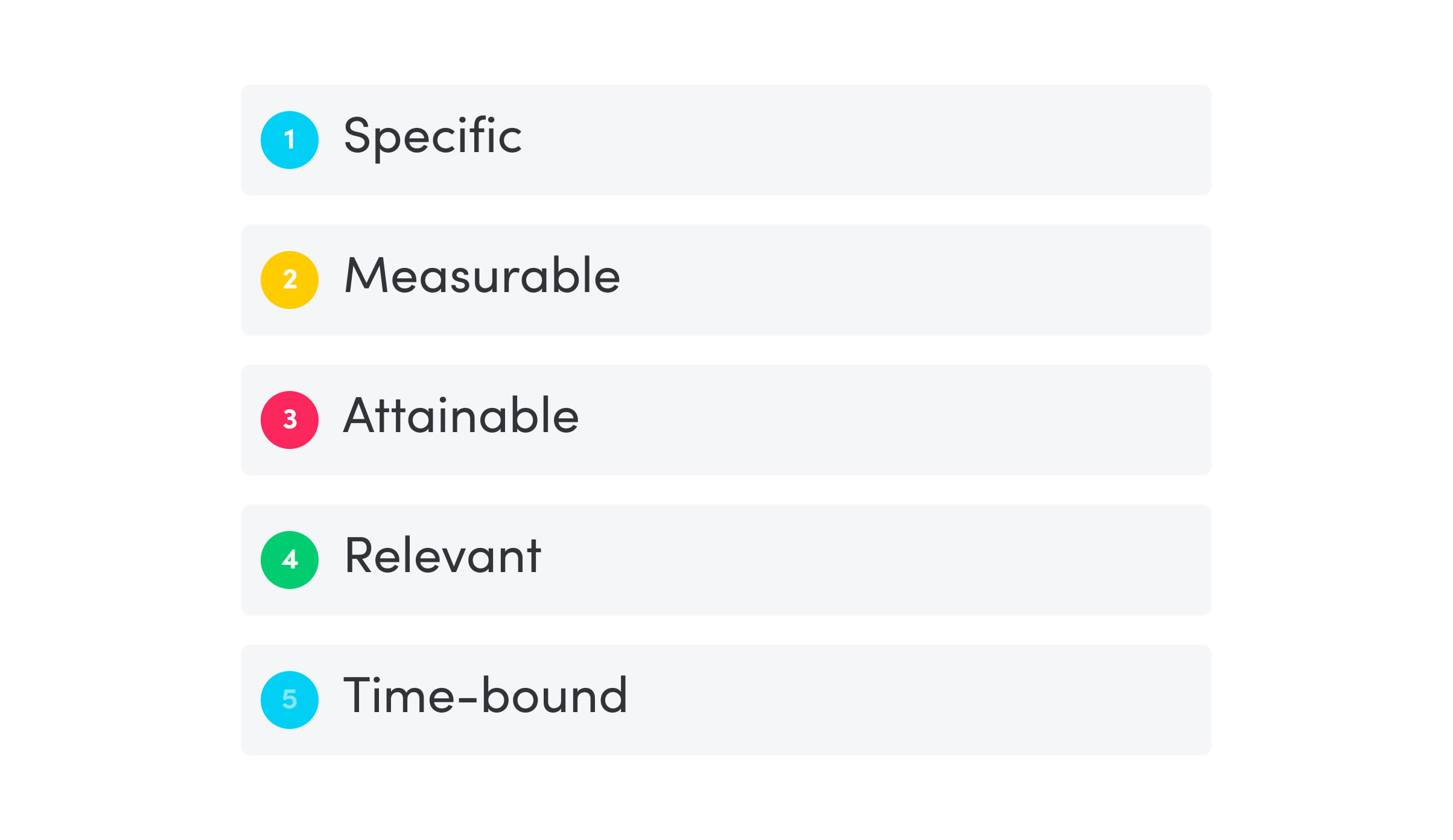
- Specific: If your objective addresses multiple issues, chances are it won’t address anything in the end. Keep your objectives targeted to ensure maximum results.
- Measurable: Every objective should be quantifiable so that you can measure the project’s progress and success.
- Attainable: Ask yourself – is this objective realistic? Is this an attainable objective based on past experience, the resources available, and the time at hand?
- Relevant: Remember the long-term goals we mentioned above? Make sure that every objective aligns with your business goals and brings you closer to defined success.
- Time-bound: For a project to be worthwhile, it needs a defined timeframe. Without it, you are creating a resource-draining money pit that will likely not bring you closer to your goals. Sorry for the doom and gloom, but it’s true.
It’s also important to remember that defining project objectives cannot be done by the project manager alone. With goals set at the company level, consulting with everyone involved is necessary to ensure the objectives are doable.
Here’s how to write a SMART project objective:
1. Create your vision statement. Every project starts with a high-level company vision statement describing your business aspiration, which you might or might not achieve. The vision statement helps inform, inspire, and motivate your project team.
2. Outline your goals. Next, based on your vision, you can outline your goals. These are also broad and long-term, but help narrow the focus for your objectives. They provide the overall context for what the project should achieve.
3. State your project objectives. Finally, you can develop your objectives. Use the SMART framework to describe the actions required to achieve your goals and use our action plan template to put it all together in a plan.
For example:
- Vision: Reach a broader, more inclusive audience.
- Goal: Launch a new accessible website.
- Objective: Develop and test the new website to comply with WCAG 2.1 AA standards and make it live by the start of Q4.
Examples of project objectives
Let’s look at three more examples of how to write project objectives for different teams and scenarios.
Marketing
- Vision: Launch a new product line.
- Goal: Make customers aware of the new product.
- Objective: Increase brand awareness and customer engagement for the new product line by 25% within the next six months through targeted social media campaigns and influencer marketing initiatives.
New product
- Vision: Create a new product.
- Goal: Conduct market research.
- Objective: Discover your target customer’s preferences and pain points by the end of Q1 through targeted online market research.
Customer satisfaction
- Vision: Improve customer support.
- Goal: Reduce customer response time.
- Objective: Implement a new online ticketing system by the end of Q3 to achieve customer support response times of under one hour.
Need a place to organize your project objectives? We got you covered.
How monday work management can help with setting project objectives
With monday work management, organizations can quickly reach shared goals faster and collaboratively at scale. The software helps set visions, goals, and objectives, plus navigate projects, processes, and everyday work.
Identify project objectives, needs, and scope from idea to execution, and achieve project goals that ladder up to company-level goals. Assign owners, set clear deadlines, follow the status of individual projects, and keep stakeholders up-to-date.
- Project views: Visualize your data and project plans the way you need with dynamic features and 15+ board views, like Kanban, Gantt charts, and more. Add subitems to give your board a deeper structure by displaying deliverables related to the project objective and use dynamic columns with due dates to display who is responsible for each objective.
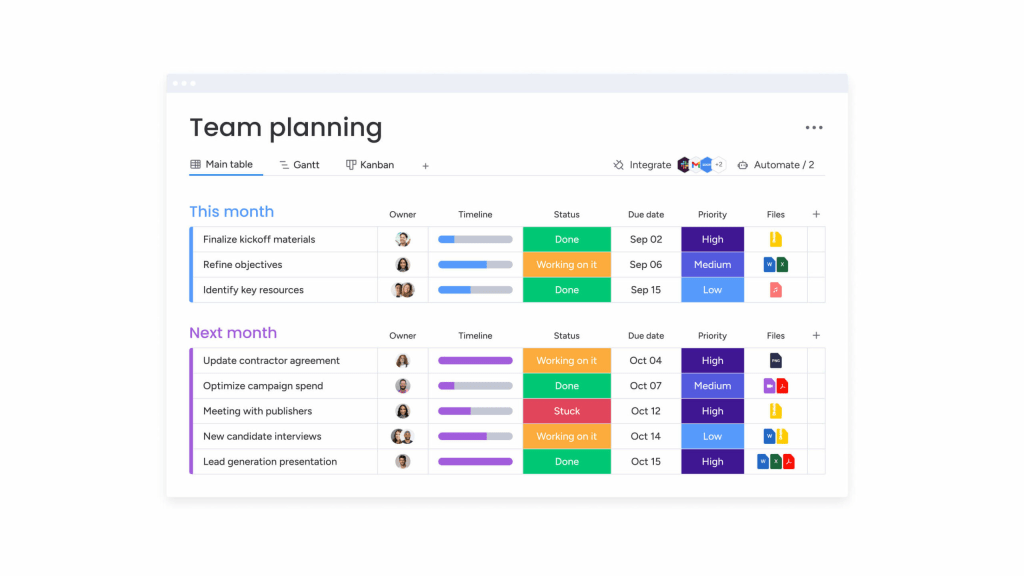
- Dashboards: Automatically display live high-level project data for insights on budget, goals, objectives, schedules, resources, and more. Customize dashboards based on your needs with over 10+ drag-and-drop widgets, including numbers, charts, and Gantt, to view data the way you need to make sharper, faster decisions.
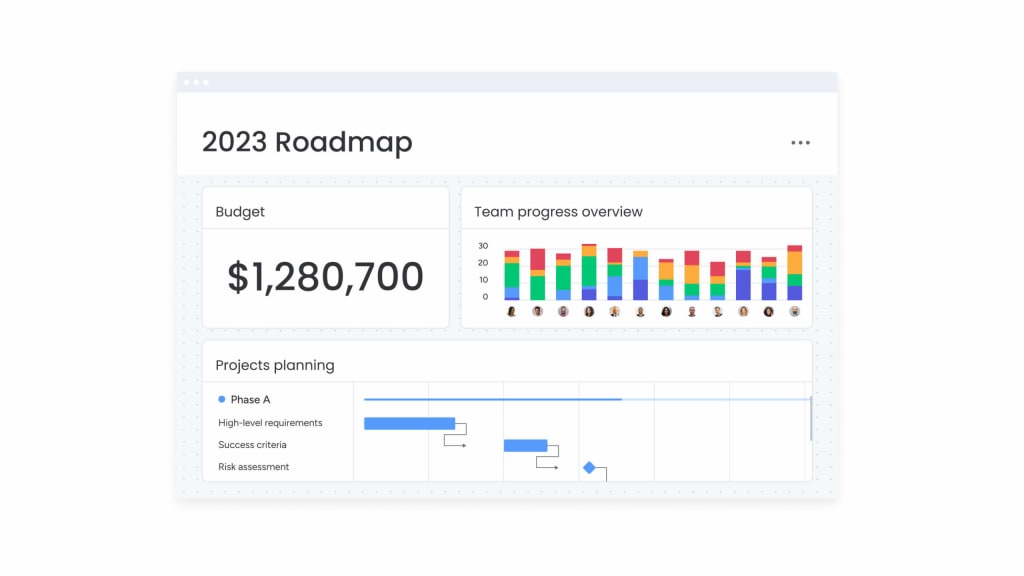
- Automations and templates: Save valuable time and get new projects started faster by automating crucial elements of your work, such as creating templated project boards, sending approval notifications, and tracking time.
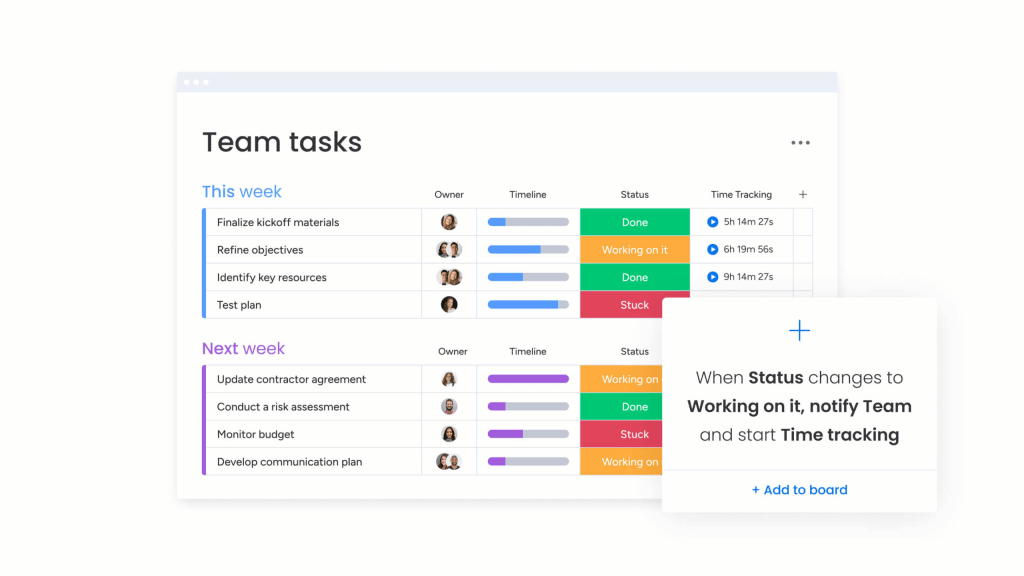
- Integrations: Connect all the tools you already use — like Microsoft Teams, Gmail, Slack, Jira, and Salesforce — to run powerful projects without ever switching tabs.
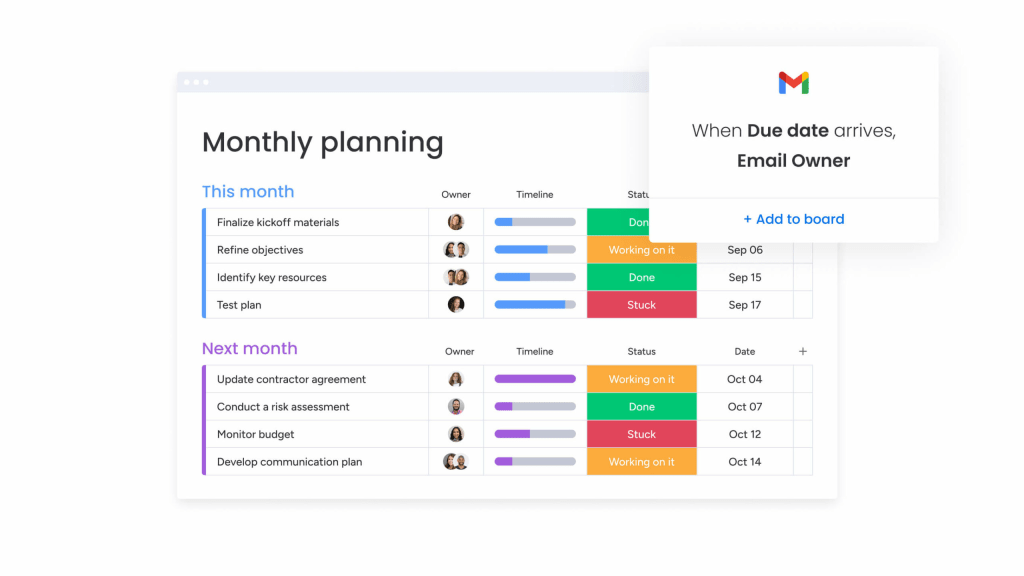
FAQs
Here are three frequently asked questions about project objectives.
What defines smart project objectives?
Smart project objectives use the SMART framework: Specific, Measurable, Attainable, Relevant, and Time-bound. They enable your team to develop a practical and concrete action plan designed to meet any goal or desired outcome.
Are project objectives and project goals the same?
No, project objectives and project goals are different but essential elements used in project planning and execution.
Project goals are the general long-term outcome you want to achieve, while project objectives are short to mid-term actions required to achieve a goal.
What questions do project objectives answer?
Project objectives answer the what, when, and how questions of every project. For example:
- What is the aim of the project?
- What are the project deliverables?
- When does it start and finish?
- When can we allocate resources?
- How long will it take?
- How much money will we spend?
Ace your project objectives with monday work management
Effective project objectives are the foundation for any project, regardless of size. Once an objective is written and approved, it represents the agreement between the project manager, company management, and project stakeholders on its purpose.
Objectives are the driving force behind a project and should be the first thing defined during your kick-off meeting. But they must also align with the project goals and company vision.
Start setting, tracking, and achieving your project objectives with monday work management.

